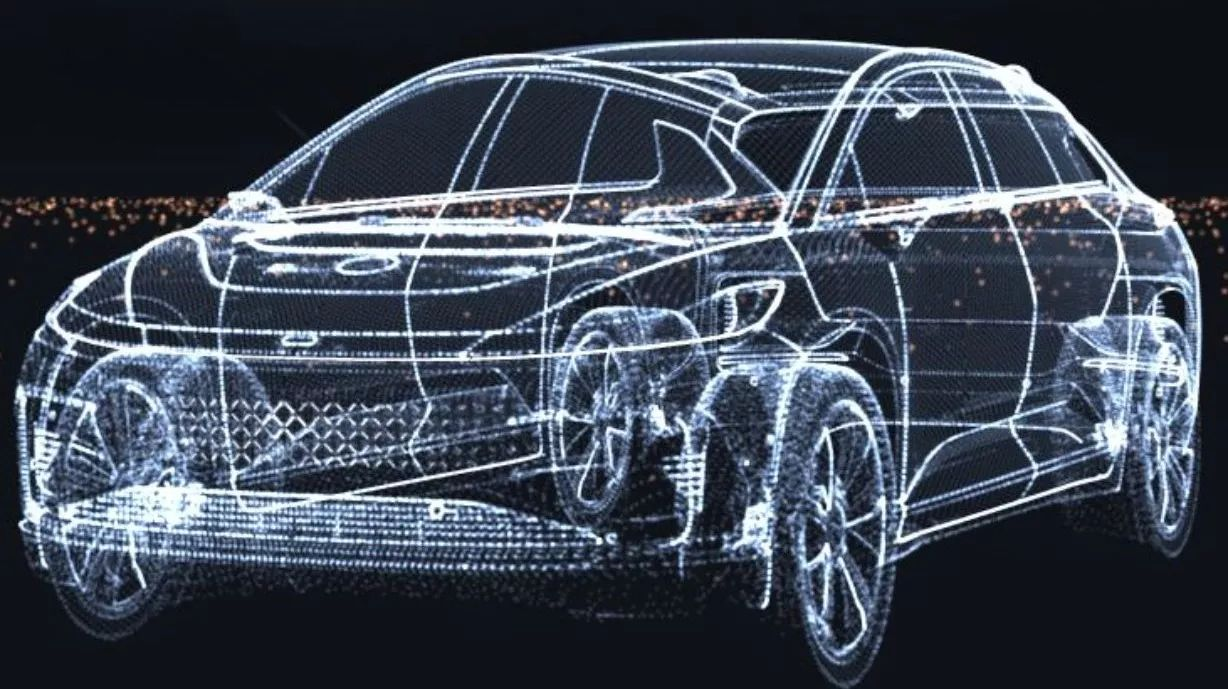The Year 2020: The Turning Point for Electric Vehicles over Traditional Fuel Cars
The year 2020 is believed to be the turning point for electric vehicles (EVs) that will ultimately overthrow the monopoly of traditional fuel cars. In this ideal world, EV batteries will be cheap enough, charging speed will be fast enough, and there will be enough charging facilities available…
Most car manufacturers have scheduled to release their EV models in that year. However, the discussions behind the policies and technical routes have left many people confused and doubtful.
Therefore, it is best to just look at the cars themselves.
The releases of NIO and WM Motor at the end of 2017 have excited China’s EV market. However, as new car companies, their products have not been officially delivered, making it difficult to have stable expectations for the quality and performance of their vehicles. It is best to look at the vehicles that have proven track records. As the CEO of Magna once put it, the EV market is like a vast forest, currently only small animals have emerged; the bears have yet to come out. Only when the big players act, would the true picture of this market reveal itself.
Therefore, we need to observe the performance of the big players to determine whether EVs can really work.
Battle of the Luxury: Jaguar I-PACE vs. Audi e-tron quattro
The first two vehicles competing for the title of the “first luxury pure electric SUV” are the Jaguar I-PACE and the Audi e-tron quattro. The Model X can frown all its way.
The Jaguar I-PACE will be officially released at the Geneva Motor Show in March next year, but you will have to wait until June to purchase it.
This is already early enough.
After all, this is the first pure electric SUV launched by a traditional luxury car manufacturer–something that should interest those who love the old world yet want to embrace the future.
We are looking forward to the I-PACE not only because it is likely to be the earliest in timing, but also because it is one of the most stunning cars produced by Jaguar, a legendary British car brand in the past few decades (as described by foreign media).
However, there is nothing shocking about its appearance…
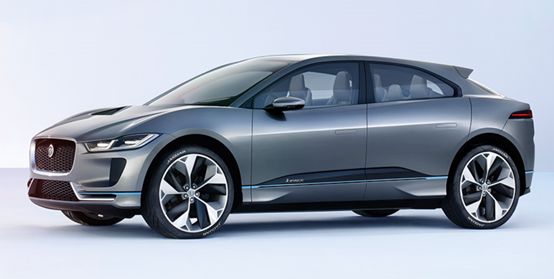
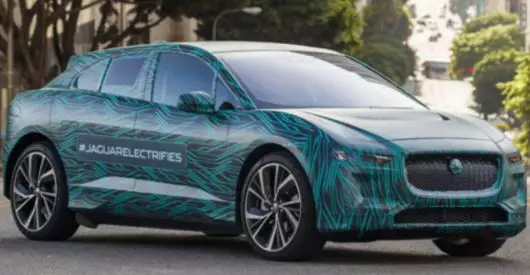
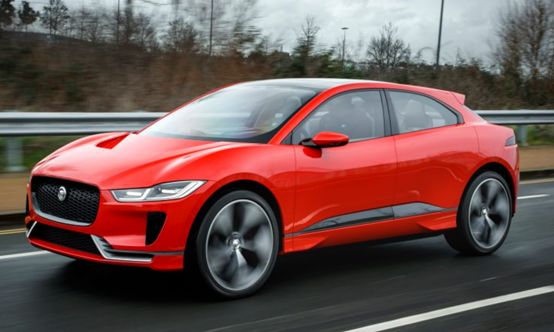
Currently, spy photos of the disguised I-PACE being road tested have been leaked in many places. We also just shared a test drive report.
Clearly, Jaguar has made sufficient preparations for its first electric product, with the I-PACE having completed 1.5 million kilometers of road tests and 11,000 hours of cumulative testing worldwide.
On the subject of this vehicle, Jaguar officials were very modest, saying that firstly it is a Jaguar, and secondly an electric car, equally meeting expectations in terms of its appearance, handling, performance, and ride experience, making it a true Jaguar.
In my opinion, this is essentially an improved electric car. If Jaguar wants people to not be able to tell this is an electric car, I think they’ve succeeded… they even kept the grille design, with a kind of British humor and charm.
But the details are not neglected; for example, the hollowed out design of the air inlets above the grille, on either side of the front bumper, and on the rear spoiler are used to reduce wind resistance.
Jaguar’s technology department executives said that the I-PACE was designed on a blank sheet of paper, and Jaguar has also actually revealed their own plans for new energy projects, with different product platforms for pure electric, plug-in hybrid, and hybrid. Hmm, just look at Volkswagen and others; they all want to make their products stand out on the pure electric new platform.
Jaguar’s technology is known as the electric drive module, eDM, and is an electrification platform architecture. It is a set of powertrain systems that can be matched to form three types of power combinations; light hybrid, plug-in hybrid, and pure electric.
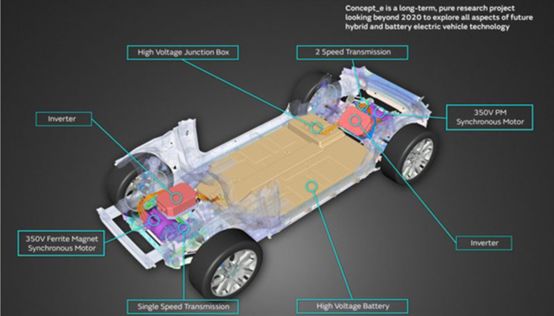 Before the official release, Jaguar invited consumers to test drive the car in multiple cities. This is one of the reasons why we saw disguised cars on the road in different cities. Of course, it was only for the riding experience to test the endurance.
Before the official release, Jaguar invited consumers to test drive the car in multiple cities. This is one of the reasons why we saw disguised cars on the road in different cities. Of course, it was only for the riding experience to test the endurance.
Jaguar’s Chief Designer, Lan Callum, said that the feedback from these test drives was very good. In addition, he also said that the I-PACE had a beautiful design, high-performance of a sports car, the comfort of an SUV, completely subverting the traditional textbook design…(His original words were tearing those textbooks apart. I wonder what is written in those textbooks.)
In fact, the main experience of the test is endurance and performance.
The I-PACE is equipped with a 90-degree lithium battery that can travel 350 kilometers on a single charge (approximately 500 kilometers under NEDC standards) and accelerate from 0 to 100 in under 4 seconds. As for charging time, the official website claims that a 50kW DC fast charge will take only 90 minutes to charge 80% (too slow!).
Recently, a reservation customer from Finland revealed the prices of the I-PACE:
First Edition: priced at $98,773 (approximately RMB 650,000) with HUD, air suspension, and panoramic sunroof;
Top-end HSE: priced at $90,387 (approximately RMB 593,700) with 18-way electric seats, surround sound, and other features;
Mid-range SE: priced at $83,864 (approximately RMB 550,800) with 20-inch wheels, adaptive cruise control, leather interior, and power tailgate;
Base model S: priced at $76,400 (approximately RMB 501,800) with 18-inch wheels, LED headlights, and Meridian sound system.
I must say, the price is a bit high. After all, it’s a bit smaller than the Model X…
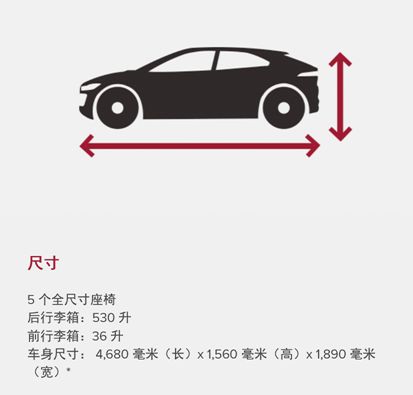
The Audi e-tron quattro debuted at the 2015 Frankfurt Motor Show, while the I-PACE made its debut at the 2016 Los Angeles Motor Show. They were both released in 2018. Looking at the luxury pure electric SUV market, there are only two besides the Model X. It’s impossible not to compare them.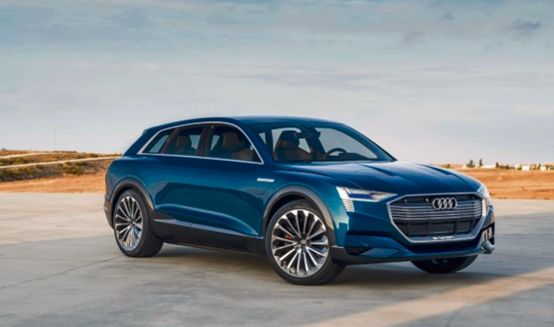

Basic Information about Audi e-tron quattro:
The e-tron quattro is a pure electric SUV with a crossover style between the Q5 and Q7 in size, equipped with a 95-degree lithium battery, a range of 480 km, and is expected to be launched in the second half of this year.
-
Platform: Built on the same platform as Porsche Mission E;
-
Battery: Provided by LG and Samsung, the modular design makes it very flexible to adjust the battery;
-
Motor: The low configuration is a dual motor system, one at the front and one at the rear, while the high configuration is a three-motor system, with two at the rear and one at the front.
-
Charging: Supports 150 kW fast charging (will subsequently launch 350 kW fast charging), charges 80% in half an hour with a range of over 300 km, and is also equipped with wireless inductive charging technology;
-
Performance and Range Under Different Environments: Senior officials of Audi’s R&D department said that some test drive reports of the Model S showed that its performance varied under different environments, while the e-tron quattro had consistent performance under different seasons and environments, which could beat the Model S in this regard.
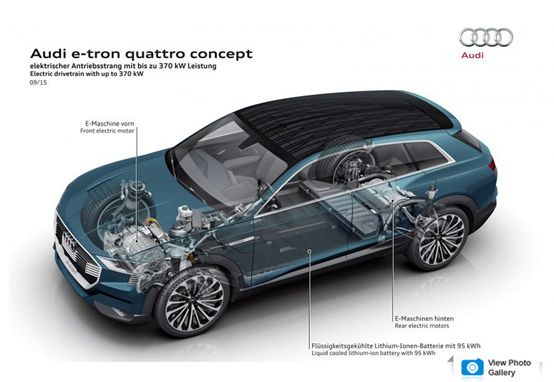
In addition, when the e-tron quattro concept car was released, it was claimed to have a 4.5-second 0-100km/h acceleration time. After all, it is an Audi quattro. However, they did not specify this on the production-ready version. Instead, they emphasized the convenience of charging and the large space, which could allow the hounds to catch rabbits, etc., as their unique selling points. The production version may have lower performance and pleasure.Both models represent traditional luxury brands’ attempt in the new energy vehicle field, but they seem to lack innovation and smart features. The electrification level is similar, and the difference in battery capacity is determined by supply chain choices. Since they are both major players, success depends on the market. From this perspective, both cars are just testing the waters, and the true capability of the brands remains to be seen (hopefully there is more than meets the eye).
Targeting the Korean Market: Hyundai Kona EV
Despite being a major producer of batteries, Korean brands have been slow to develop new energy vehicles, especially in the EV sector. This is understandable since Korean brands usually follow in the footsteps of Japanese brands, which have not been enthusiastic about EV technology. Japanese brands have been putting all their efforts into developing hydrogen fuel cell technology, and Korea is following suit. They are not serious about pure electric vehicles, and it’s difficult to predict their other paths, so they are waiting and watching.
Hyundai released the Ioniq concept car in 2016, offering three drivetrain options: pure electric, hybrid, and plug-in hybrid. When Kona was unveiled in Korea this year, Hyundai executives said to the media that Kona will launch an all-electric version in 2018. Not long ago, media spotted Kona EV test spy photos, and it’s speculated to debut at the upcoming Geneva Motor Show.
It is reported that Kona EV has a battery capacity of 64kWh and a range of about 340km. Its price is about $40,000. As a compact all-electric SUV, its range is similar to the entry-level Model 3 and exceeds the old version of the Leaf by nearly 200km (unfortunately, the new Leaf can go up to 400km). Hyundai likely developed this car to compete between the Leaf and the Model 3, focusing on the growing SUV market segment and hoping to create some buzz by targeting a specific price range.
In short, there’s nothing particularly noteworthy about Korean brands’ slow progress in electrification.
By the way, Kia will launch Niro EV based on the same platform.
If you can’t afford a Jaguar or Audi, you can buy Hyundai or Kia.
However, all of the aforementioned models are just transitional products to electrification. Real disruption to the automotive industry in the coming years may come from new automakers, as they currently enjoy advantages that established brands don’t.
The Challenges from Emerging Automakers: Those Yet to Be Determined…
FF91 has been all over the news recently due to leaked project information. It costs $60,000 for Evergrande Health Industry Group to sell one vehicle, and it’s hard for me to describe. Just read the news.
Lucid Air is now available for pre-order, but it probably won’t be released until 2018.# Lucid: A Promising EV Brand
Lucid is a pure electric car company from the United States, established in 2006, three years later than Tesla. Its members come from companies such as Tesla and Mazda.
Jia Yueting and BAIC have successively become its directors and then sold their stake. This year, there was news about discussion with Ford on acquisition, but it is unknown what the result is. It seems that mass production is not going smoothly.
This year, Lucid Air was officially released, with a base price of $60,000, a range of 380 km, and equipped with automatic driving hardware. In addition, there is a high configuration version available, with a range of up to 640 km. Although the price has not been announced, Lucid stated that if all the optional features are selected, it will value $100,000.
Lucid Air is more cost-effective than Tesla Model S, with longer range and lower price, positioning itself as the No.2 pure electric luxury new brand. However, the issue of mass production remains, as Tesla still has not resolved it after so long. Can Lucid bring confidence to people?
It seems that both cars are unlikely to be seen in 2018. We still have hopes for our domestic EV brands such as NIO and WM Motor. Nevertheless, NIO deliveries are expected to begin in the first quarter of 2018, and the order volume appears to be optimistic, to the extent that some enthusiasts were surprised and their anticipation of NIO was fulfilled.
Whether NIO will succeed is hard to say. After all, anything is possible here. You may say that its capital game seems unreliable, but the order records have been impressive so far. After the car is delivered and the customers have experienced it, the conclusion will be drawn naturally.
As a super complex consumer product, there is nothing more important and explanatory than the product itself. Guaranteeing the product reliability may be the biggest weakness of startups like NIO. Compared with traditional carmakers, their EVs are not intelligent enough, and compared with new carmakers, their intelligent cars are not reliable enough. What is the higher tolerance threshold for consumers?
I’m very curious, haha.* Outlook for 2018: How will the traditional car companies and new carmakers clash?

This article is a translation by ChatGPT of a Chinese report from 42HOW. If you have any questions about it, please email bd@42how.com.
